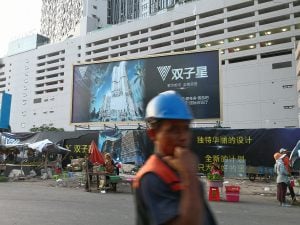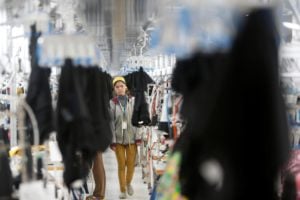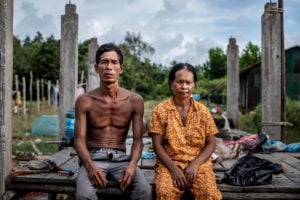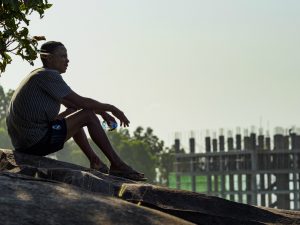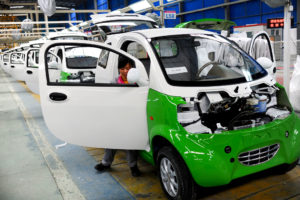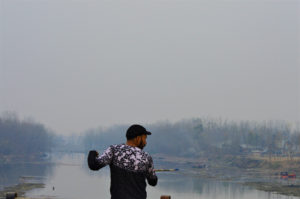Nuon Oun, a resident of Tropaeng Thmor in southern Cambodia, watched this summer as a cement company started obliterating the side of the mountain facing his village. A gash runs for hundreds of metres from the top of the southernmost face of Phnom La’ang to the base, with diggers and dump trucks biting into the mountain’s flank like flies.
“There were three explosions this morning,” said Oun from a small dry goods shop and hair salon where residents gather on a Sunday afternoon in late July.
Oun used to climb high into the mountain’s side, collecting wood and selling it in the village. He would encounter wild boar, monkeys, chickens and snakes. There were rumours of tigers too. Now, even the village cows won’t get close, scared off by explosions that have been known to shake people off their motorbikes.
“When they started to bomb it got quiet and the animals disappeared,” said Oun.
Thai Boon Roong, a company backed by Chinese investors and the legacy of an eccentric and well-connected Cambodian tycoon, has claimed the mountain as its limestone repository for more than two decades. Phnom La’ang is a karst, or limestone formation, covering more than 500 hectares in Cambodia’s Kampot province. The company’s long-held plans to build a cement factory at the base of the mountain have now been realised, and it started blowing up the side of Phnom La’ang last year.
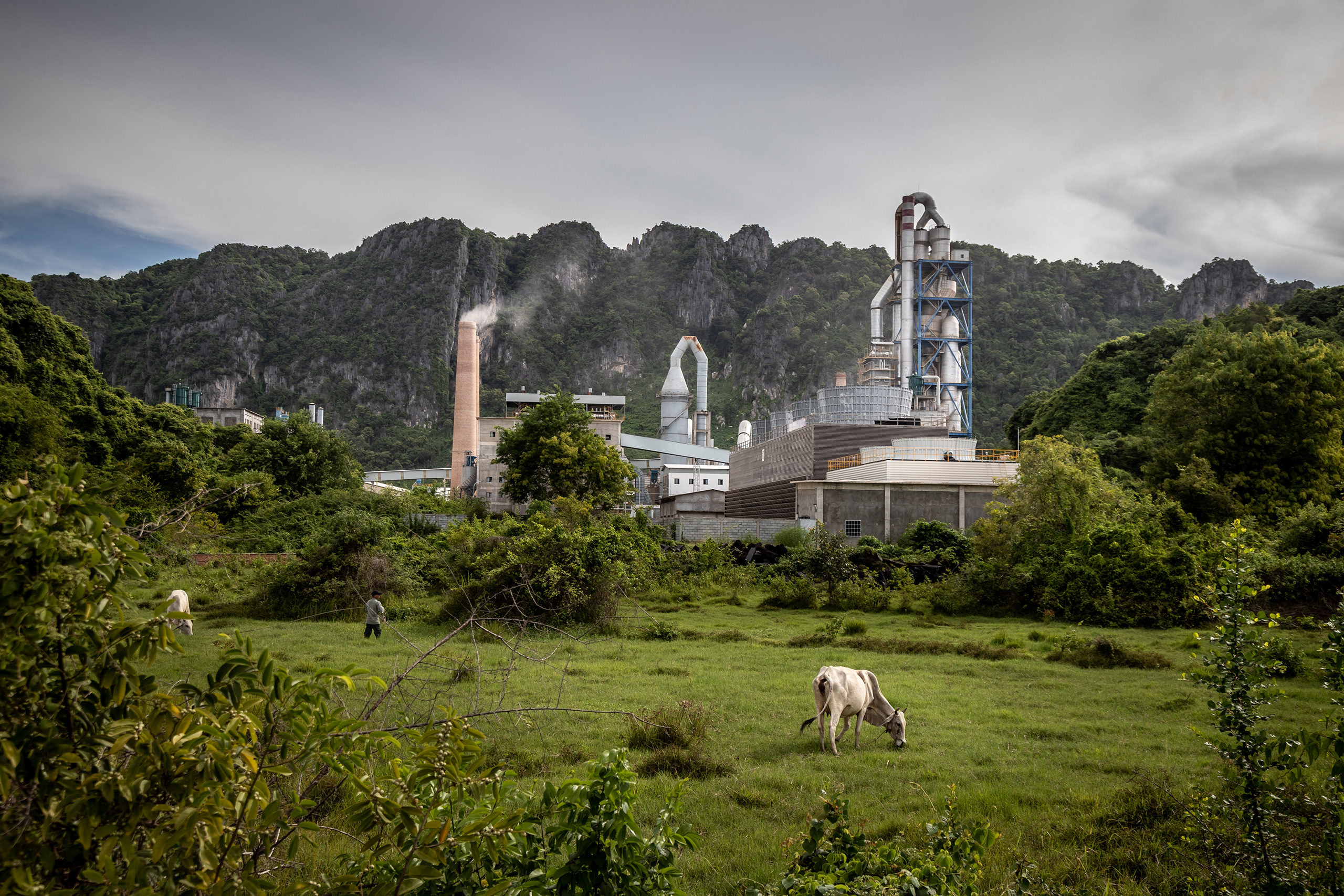
Cambodia received a record number of investments in the last quarter of 2019, with nearly 1,500 projects approved, worth almost US$5 billion. The country’s limestone mountains, like its sandy coasts, are being devoured to meet demand from the construction industry, with little thought to what is being lost.
This is despite warnings from conservation biologists that the karst landscapes hold undiscovered species.
Neil Furey, a bat expert based in Cambodia, said karsts have been neglected by local and international researchers, so an understanding of their importance is just starting to emerge.
“Recognising these karsts support highly unique, narrowly endemic assemblages of life is something that’s been missed,” he said.
‘Species factories’
Snails are an indicator group, explained Jaap Jan Vermeulen, a Dutch botanist and malacologist whose work has centred on the Mekong Delta Limestones, a series of relatively small limestone formations on the coasts of Vietnam and Cambodia.
In his reports on the snails of these outcrops, Vermeulen marks the karsts with dots: a cluster on Cambodia’s border with Vietnam, on the Kiên Giang coast in Vietnam, and one big dot on Phnom La’ang.
Vermeulen calls the limestone hills “species factories”. Earlier this year, he published findings including a new snail – Aulacospira furtiva – unique to Kampot province’s Kampong Trach karst, just 20km away from Phnom La’ang. Differing from other Aulacospira snails, it has a flatter shell and additional “teeth” inside the opening of its shell. Vermeulen explained that the isolation of these limestone hills means they act as islands, with unique species evolving to suit the different conditions of each location. Further to this, his theory is that the extreme environments of the karsts “generate speciation”, speeding up evolution: “Any animal that finds itself trapped on a hill has to evolve or go extinct.”
Phnom La’ang, the largest karst in the Mekong Delta Limestone group, holds eight endemic species of snail, the most of any in the group, he said. He believes there are more than 100 other unidentified invertebrate species on Phnom La’ang alone.
“Those hills are extremely rich, with lots of species that don’t occur anywhere else, and that will all be lost,” Vermeulen said.

After one trip to Phnom La’ang in 2007, Cambodia-based herpetologist Neang Thy said he found a new species of bent-toed gecko. He believes the loose rocks and caves of the limestones may harbour microhabitats for frogs, snakes and reptiles.
“The cement industry is the threat to the gecko and other invertebrates there,” he wrote in an email. “All species in karsts are going to be disappeared if no action [is] taken.”
Furey, the bat expert, said that while it’s a small community of researchers who specialise in bats, they attract more funding because the creatures are mammals. There are only a handful of scientists globally who study the other species endemic to karsts, particularly invertebrates and plants. And most of the experts are based outside the Mekong delta.
Phnom La’ang holds one of Cambodia’s largest bat colonies, but Furey said he has not studied it for a few years because approaching the mountain and conducting research there requires permission from the Thai Boon Roong company and the government. This hassle led him to focus on other colonies in Kampot and Battambang provinces that are protected by communities that harvest and sell the guano as fertiliser.
“We’re really at the dawn of cave biodiversity explorations,” he said. “Nearly every survey that goes on finds new forms of life.”
The conflict
Amid Cambodia’s efforts to reconstruct a government after the genocide, Andrew MacDonald, an American botanist, said he began exploring Phnom La’ang in the 1990s, when the karst outcrops seemed like “islands”, teeming with otherworldly plants and animals so different from those that dwell in the surrounding forests. In the period MacDonald was drawn to the hills, so too was Thai Boon Roong.
Several long-term residents of La’ang commune’s Tropaeng Thmor and La’ang villages said the company had been present near the mountain since the 1990s, building warehouses or buying up land from residents. Activity has increased in the last 10 years, with the company building its cement plant, worker housing and a concrete fence around the mountain.

In its early years, the Thai Boon Roong group was perhaps known as much for its hotel, newspaper and other companies as it was for its billionaire owner, Teng Bunma, the first president of the Cambodian Chamber of Commerce, who also faced allegations of drug trafficking and brandishing guns on airplanes.
The company’s cement production operations are now moving at a breakneck pace, although its history in Kampot has tended to not be publicly disclosed. A Cambodia Daily report from 2006 claims Thai Boon Roong wanted to buy the Chakrey Ting cement factory, which was established in 1961 with help from the Chinese government as a mark of “Sino-Cambodian friendship”. The factory is located 10km west of Phnom La’ang. Chinese state-owned enterprise Huaxin Cement invested more than US$100 million in 2012 to re-establish the factory.
Although Thai Boon Roong had a mining concession of 850 hectares in La’ang commune from as early as 2013, the company only inaugurated its cement factory last November.
Local and English-language media coverage of the inauguration ceremony said Thai Boon Roong had support from undisclosed Chinese investors. However, a company press release from China-Cambodia Huasheng Engineering explained that their company would lead quarrying.
Protecting Cambodia’s karsts
The local office of the International Union for Conservation of Nature (IUCN) set out to conserve some of the karsts in Kampot province in 2016, placing new species on its endangered species’ lists.
Lou Vanny, country director for IUCN, said the organisation is working closely with the environment ministry to give protected area status to Phnom La’ang and four other hills in Kampot.
Vanny said that the environment ministry approached Thai Boon Roong, with IUCN’s support, urging them to preserve 100% of Phnom La’ang. The company refused. The ministry then reduced its ask to 70%, then 50%, and finally to 30% of the mountain. But the company would not budge.
Thai Boon Roong finally offered to protect 16 of the 500 hectares, at which point the ministry retreated from negotiations, Vanny said.
“The Ministry of Environment has not abandoned this effort,” he added, noting that it was teaming up with the culture and fine arts ministry to make a case for preserving a shrine on the mountain. “They still try, they try their best,” he said.

“That sort of standstill is most dangerous” explained Vermeulen, the Dutch the invertebrate specialist, “because elsewhere… that standstill is the moment that the company comes and quietly blasts as much of a hill as they can.”
The environment ministry has not responded to questions from China Dialogue. The director of Kampot province’s department of environment, Suy Thea, said he was too busy to respond.
Peak of construction
Demand for cement in Cambodia is largely met by domestic production. While Cambodia’s cement production increased from 3.6 million tonnes in the first nine months of 2018 to nearly eight million tonnes in 2019, Mines and Energy Minister Suy Sem said the country began importing more cement after 2018 to support local demand.
Vanny believes that the country could supply its construction needs without completely sacrificing Phnom La’ang, arguing that the Chip Mong Insee cement plant, which produces 5,000 tonnes per day, or double Thai Boon Roong’s maximum capacity, has a concession for a smaller karst that they estimate will supply limestone for 80 years.
But when asked why Thai Boon Roong was able to stand up to the environment ministry, he claimed it had powerful connections, pointing to the recent ceremony to inaugurate its cement factory, which was attended not only by the chairman of China-Cambodia Huasheng Engineering, but also by senior Cambodian officials, including Prime Minister Hun Sen.
“They took the prime minister [to the mountain] to show that this area belongs to Thai Boon Roong,” he said.
Under Cambodian law, land and mining concessions to corporations must be announced publicly, but Vanny said he has so far not been able to get information about the concession’s terms and required environmental impact assessment, despite multiple requests for details on Thai Boon Roong.

Acknowledging the construction demand, Vermeulen, the invertebrate specialist, said that quarrying part of a hill is better than removing the entire mound, and theoretically mining can be limited to small spaces or parts of a karst, at least saving some of the endemic species that live there from extinction.
“With proper planning and biodiversity assessment before the boys with the ANFO (an industrial explosive) come in, quarrying, even on a large scale, for cement production is possible without significant damage to biodiversity,” he said.
Vanny argues that the cement industry can find ways to balance mining with nature. He worked with local conglomerate Chip Mong Insee and the region’s biggest producer, Siam City Cement, on a biodiversity conservation study for another cement factory in Kampot province.
Chip Mong Insee spokesperson, Tieng Sopheak Vichea, said staff regularly meet with community leaders living near their factory in the Banteay Meas area to understand the environmental impacts and social issues caused by its activities. The company also has an environmental impact assessment and a rehabilitation plan for Banteay Mas after they exhaust their concession.
Sajith Edirisuriya, general manager of Chip Mong Insee’s Ecocycle project, oversees a co-processing operation – one of Cambodia’s first – that utilises waste from the company’s cement factory and neighbouring businesses to heat the cement kilns that produce clinker. Between that and its solar panels, the company is using 33% green energy at its Kampot plant, Edirisuriya said.
Although most have scars or gaping wounds in their sides, not all of Cambodia’s limestone hills are marred by quarrying. Since 2005, the residents of Kampong Trach district have steadfastly defended their mountain park, a system of karst hills home to Buddhist shrines and a grisly contemporary history – the Khmer Rouge cadre pushed those they deemed unfaithful or weak to their death in the caves.
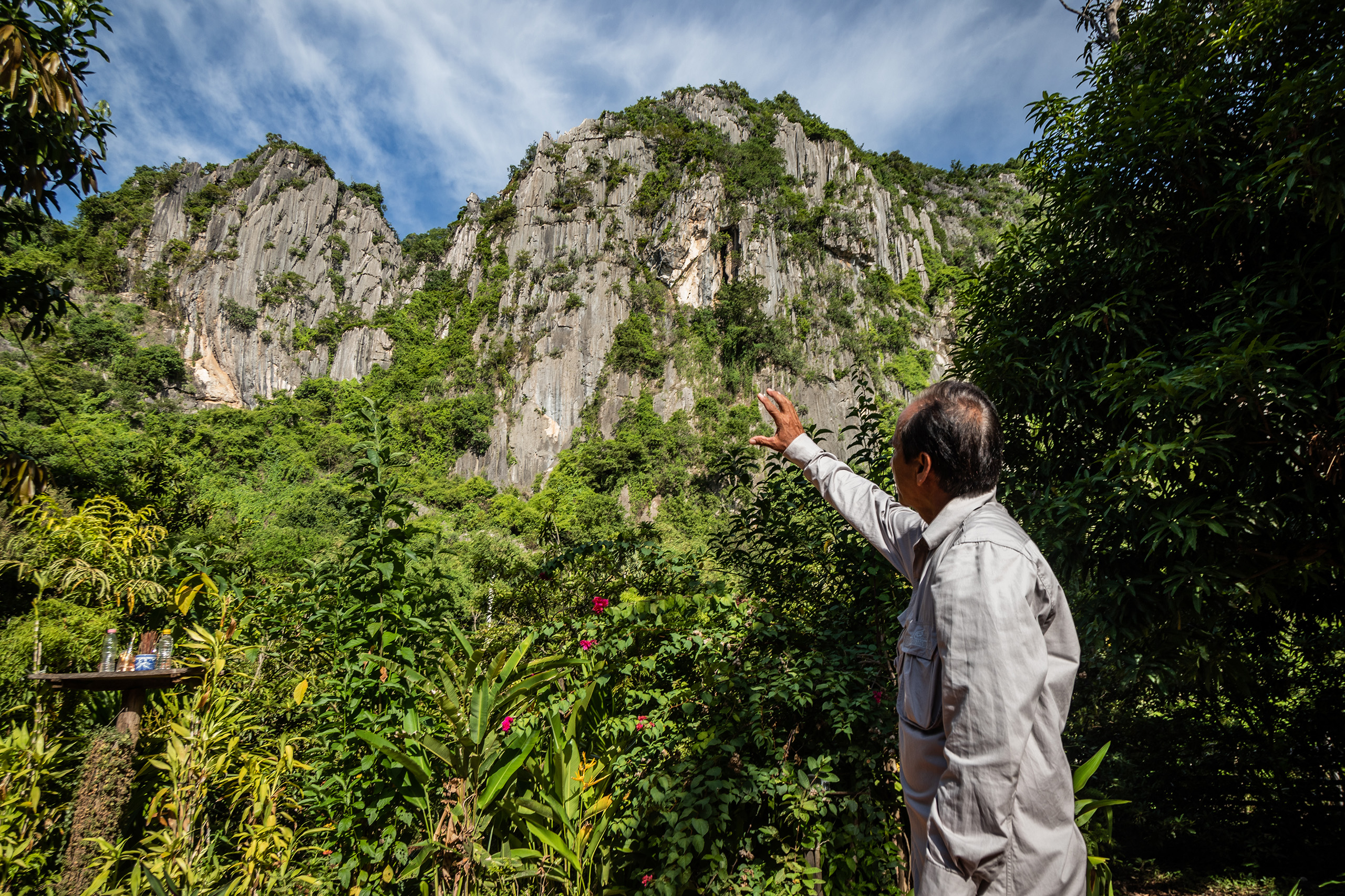
Ken Sam An, who has overseen environmental protection and ecotourism at the Kampong Trach Mountain Park since it was established in 2005, said he and other residents had to convince people to give up limestone quarrying before they could protect the area. This was difficult because mining is lucrative. But ecotourism now attracts thousands of visitors to the mountain each year and has not harmed local wildlife despite heavy foot traffic.
Ecotourism was the main reason residents would not accept Chip Mong Insee and Kampot Cement representatives, who briefly surveyed the mountain for their respective plants around 2012.
“Not everyone gets the benefits from the tourism, only some. But some people, even if they’re not living here, they can sell the chicken and coconuts [to tourists or vendors], so it’s helping them here as well,” he said.
Back in La’ang commune, a 60-year-old man, who asked not to be named, looked out at the excavators swinging their arms and dumping rubble down the mountain. He recalled his five-hectare farm along the side of Phnom La’ang, which he cleared of forest and sold to Thai Boon Roong for US$6,000 about seven years ago.
The land is inevitably worth more now, he speculated, but he would rather get the farm back to make a living from it.
“Before my life was peaceful and better, and I didn’t owe anyone money,” he said.

